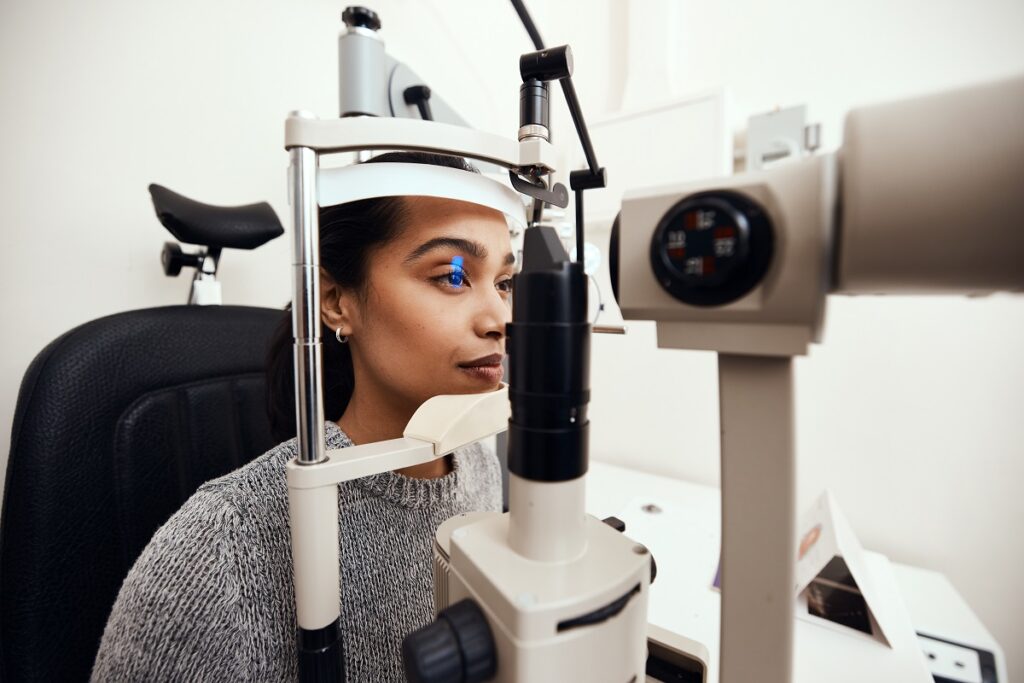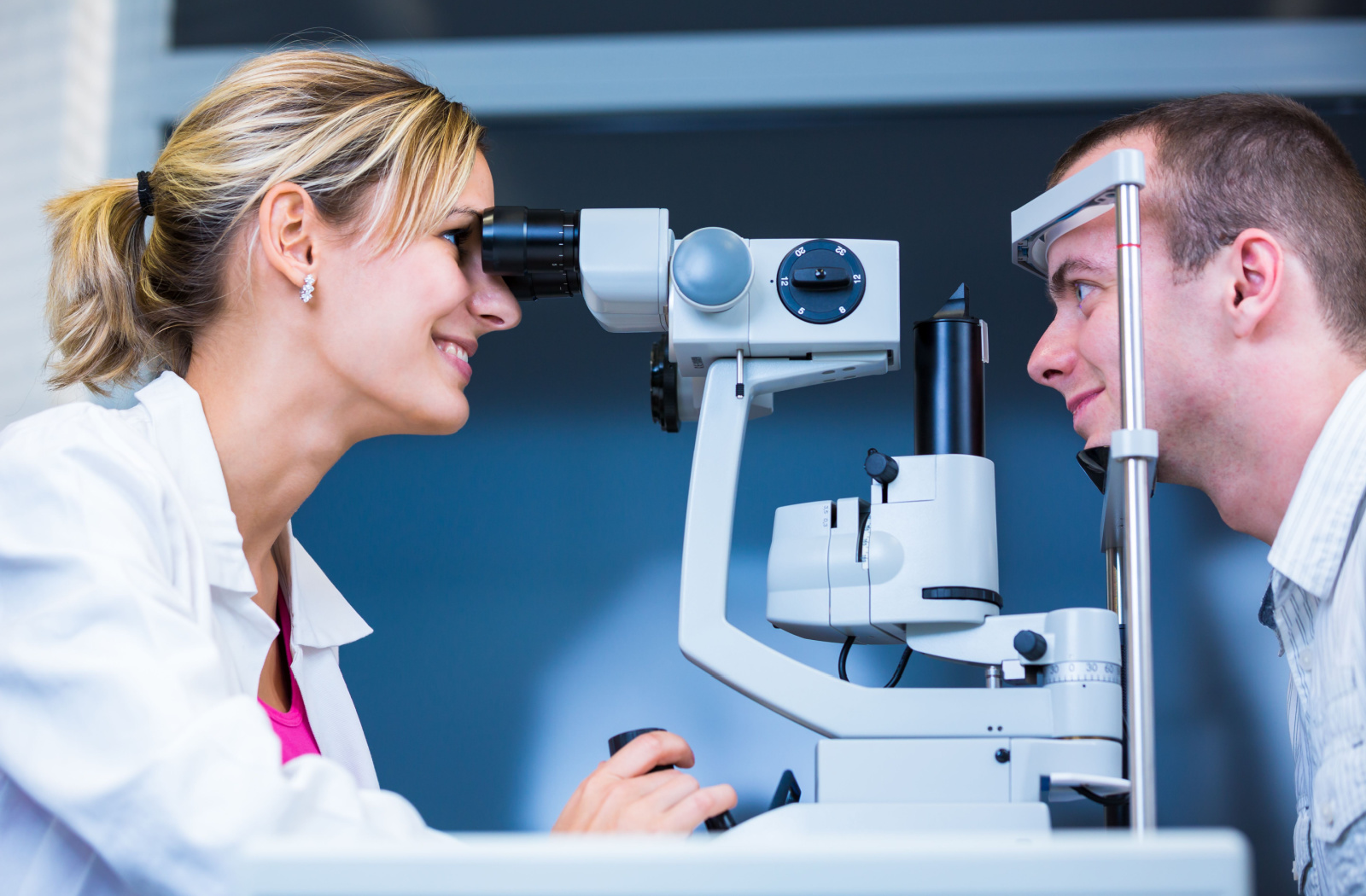Exceptional Care at Opticore Optometry: A Vision for Your Future
Exceptional Care at Opticore Optometry: A Vision for Your Future
Blog Article
The Comprehensive Eye Exam: What to Anticipate Throughout Your Visit to the Eye Physician
A check out to the eye physician for a detailed eye exam is more than a regular check-up; it is an essential step in securing your aesthetic health. What precisely happens during the eye health analysis, and how does it affect the prescription process?
First Assessment
The first assessment throughout an eye examination functions as an important foundation for recognizing a person's visual wellness requirements. This stage establishes the tone for the entire exam procedure, enabling the optometrist to collect important info regarding the person's medical background, way of living, and details vision problems. By diligently assessing any pre-existing problems, drugs, or previous surgical procedures, the eye care professional can tailor the evaluation to attend to individual demands effectively.

In addition, the first appointment is a chance for clients to voice any type of inquiries or worries, cultivating a collaborative relationship with their doctor. This communication not just makes sure that the person feels informed and comfy yet additionally empowers them to get involved actively in their eye health and wellness monitoring. Collectively, these discussions make it possible for the eye doctor to devise a tailored exam strategy, guaranteeing optimal treatment and precise diagnosis.
Visual Skill Examination
Starting the core elements of an eye evaluation, the aesthetic skill test is developed to evaluate the sharpness and clearness of a client's vision. This vital assessment helps identify just how well an individual can discern letters or signs at a standard range, typically using a Snellen chart (Optometrist Riverside). The chart comprises rows of letters that reduce in size inside out, with the patient positioned at a traditional range of 20 feet
Throughout the test, the person is asked to cover one eye and read aloud the tiniest line of letters they can see plainly. This procedure is duplicated for the other eye. The results are taped as a portion, with 20/20 vision indicating normal aesthetic acuity-- where the patient can see at 20 feet what an individual with normal vision can see at that distance.
The aesthetic acuity test likewise recognizes potential refractive errors such as hyperopia, astigmatism, or myopia, which may demand rehabilitative lenses. By developing a standard of visual efficiency, the test is an essential diagnostic tool that helps the eye treatment expert in establishing a suitable treatment plan customized to the person's distinct visual requirements.
Eye Health Evaluation
Following the aesthetic acuity examination, a detailed eye health analysis is conducted to make certain the general well-being of the eyes. This critical segment of the eye test involves a thorough examination of both the internal and outside frameworks of the eye.
Next, focus shifts to the inner structures. With using ophthalmoscopy or fundus digital photography, the retina, optic nerve, and blood vessels are thoroughly evaluated. This step is essential for identifying problems such as retinal detachment, glaucoma, or diabetic retinopathy. Oftentimes, student expansion is performed to enhance visibility of the interior eye frameworks, although this may lead to short-lived light sensitivity for the client.
Additionally, intraocular pressure is determined to evaluate for glaucoma danger. This is typically done using tonometry, which can discover raised stress degrees that could recommend possible damages to the optic nerve. Jointly, these analyses create a comprehensive analysis to maintain eye wellness.
Refraction and Prescription
Refraction is a sophisticated treatment carried out by eye care specialists to establish the exact lens power needed to correct refractive mistakes such as myopia, hyperopia, astigmatism, and presbyopia. The Click Here objective of this procedure is to assess just how light bends as it passes through the eye, permitting the professional to determine whether rehabilitative lenses are required for boosted visual skill.
During the refraction procedure, the client is asked to browse a phoropter, a gadget which contains different lenses. The practitioner will methodically transform these lenses and ask the client to contrast clarity in between options up until the ideal possible vision is attained. This procedure is vital in crafting an accurate prescription that specifies the ideal lens power for eyeglasses or get in touch with lenses.
The prescription derived from this treatment not only enhances vision yet also works as a structure for selecting appropriate corrective eyeglasses. It is necessary to guarantee that prescriptions are regularly updated, as adjustments in vision can occur with time, highlighting the significance of regular eye examinations. This meticulous interest to detail aids preserve clear, comfortable vision in day-to-day life.
Follow-Up Referrals

Throughout a follow-up check out, the eye physician will perform a collection of examinations to examine visual acuity and look for any kind of adjustments in vision that may require an update to the prescription. Additionally, the follow-up gives a chance to talk about any pain or concerns experienced with present eyewear. Adjustments can be made to make sure convenience and efficiency, whether via lens alteration or structure modifications.
For people with ongoing problems such as glaucoma, diabetes-related eye issues, or macular deterioration, more constant follow-ups may be necessary. These visits are vital for managing and possibly reducing the progression of eye illness. Adhering to these referrals can considerably add to maintaining aesthetic health and protecting against Eye Doctor Optometrist long-term difficulties.
Conclusion
The thorough eye exam is an essential process for keeping visual health and wellness, incorporating an in-depth assessment of case history and vision issues. Secret parts include the visual skill test, which reviews vision quality, and the eye wellness analysis, which checks out the overall problem of the eyes. Refraction tests help establish the precise lens prescription necessary for optimum vision improvement. Follow-up suggestions provide advice for recurring eye care, making certain that any kind of prospective concerns are resolved quickly and successfully.
A check out to the eye doctor for a thorough eye test is more than a regular check-up; it is an important step in protecting your visual health and wellness.Kicking off the core parts of an eye assessment, the visual skill test is designed to examine the sharpness and clarity of an individual's vision.Adhering to the aesthetic acuity test, an extensive eye health and wellness analysis is carried out to make sure the general health of the eyes. These sees allow the eye care professional helpful resources to check adjustments in vision, upgrade prescriptions, and examine the overall wellness of the eyes. Key elements consist of the aesthetic acuity test, which evaluates vision clearness, and the eye wellness evaluation, which analyzes the general problem of the eyes.
Report this page